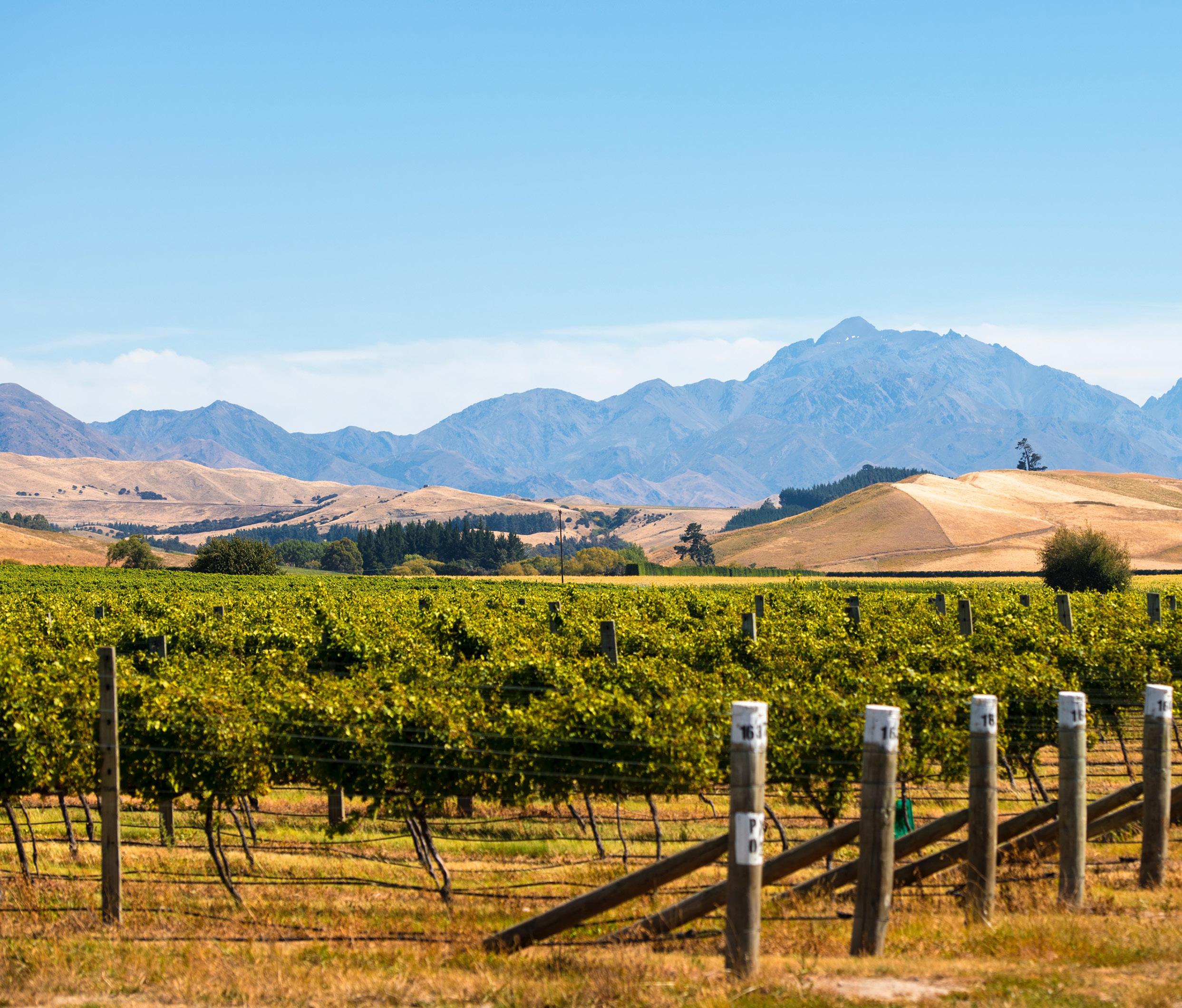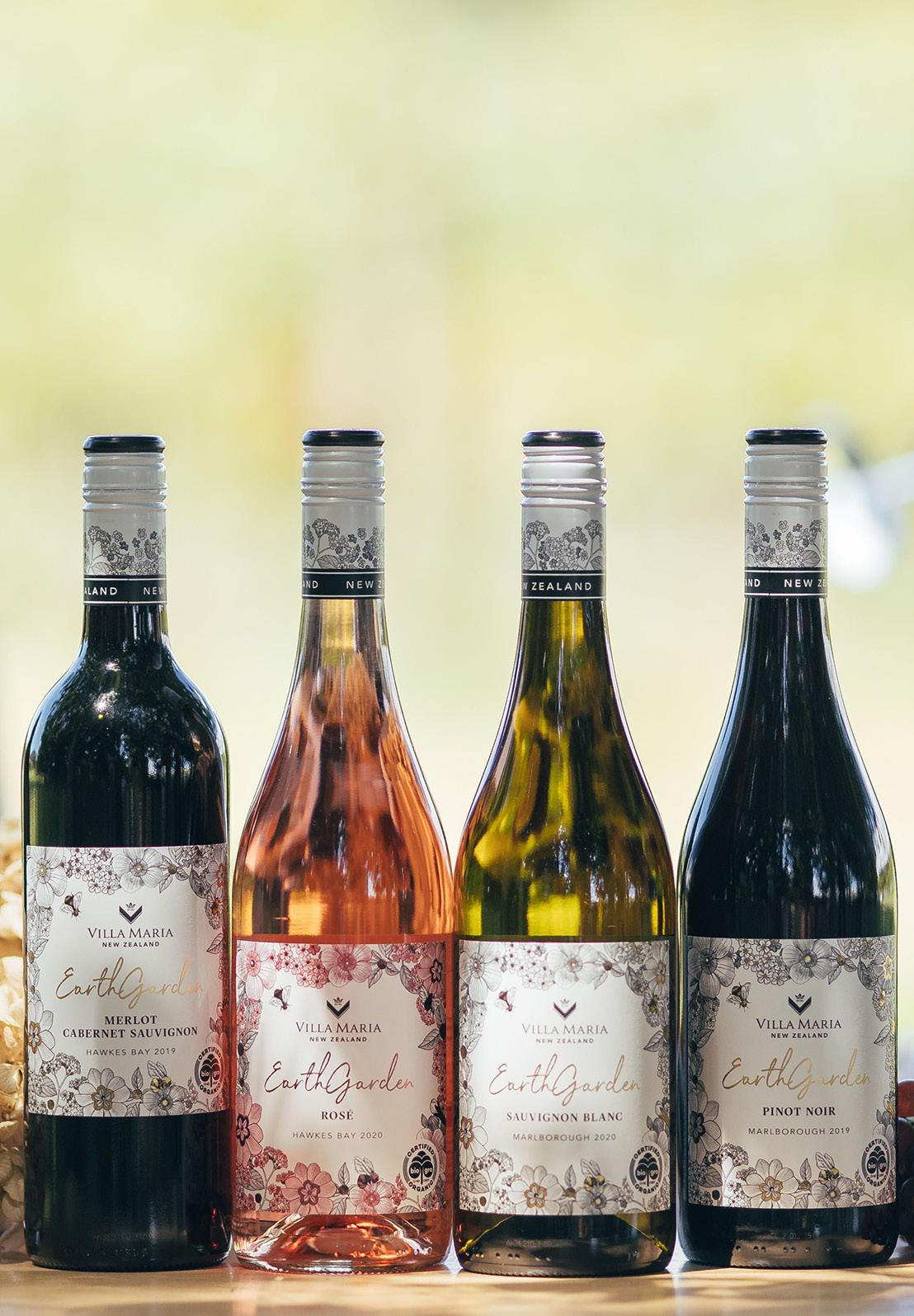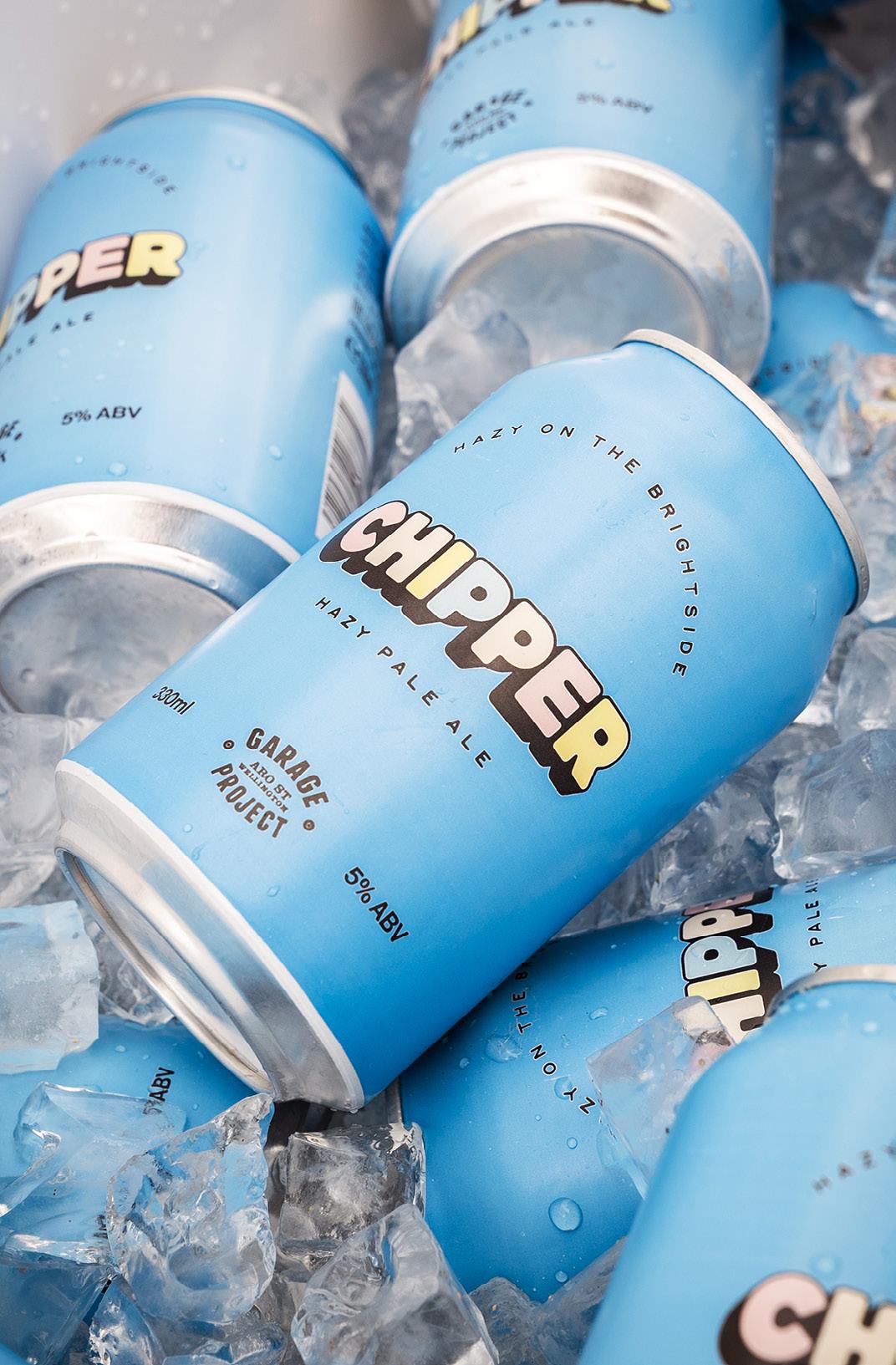
8 minute read
NEW ZEALAND DRINKS: APPELLATION AOTEAROA
Appellation Aotearoa
Boasting the world’s southernmost wine region and home to some of Australia’s favourite sips, Caoimhe HanrahanLawrence says ‘kia ora’ to wines from our Kiwi cousins.
As one of our closest neighbouring countries, it comes as no surprise that Australians have had a long-lasting taste for New Zealand wines. In fact, wines from New Zealand make up around two-thirds of all wine imports in Australia.
In addition, the Australian market is important for the New Zealand wine industry, as one of its top three export markets. New Zealand Trade and Enterprise reported that the Australian export market is worth more than $339 million, and Australian exports make up 20 per cent of all New Zealand wine exports.
New Zealand wines benefit from the familiarity that Australians have with the region, as House of Fine Wine Managing Director David Bird explained.
“New Zealand wines have a distinctive taste profile driven by the intensity of fruit and acid, they’re consistent, and there’s a familiarity and ease of access for Australian consumers,” he said.
Australian affection
According to Joval New Zealand Brand Manager Madison James, Australians come across New Zealand wines in a range of different situations.
“Australians are very confident in their repeat purchasing of New Zealand wines. While tourism certainly plays a part, consumers are exploring these wines in the on-premise environment, later purchasing at their trusted retailer and then enjoying these in the ‘home-premise’. Marlborough Sauvignon Blanc remains one of the most consumed wines in the home, something that remains unchanged post pandemic too,” she said.
Ensure that your wine inventory includes a diverse range of New Zealand wines, not just Sauvignon Blanc, representing various regions and varietals.
-Matt Redin, Marketing Manager, Angove Family Winemakers
Bird echoes this sentiment, particularly when it comes to the well-renowned Marlborough Sauvignon Blanc.
“Consumer research shows Australian consumers place a high level of trust in New Zealand wines.
They continue to be one of the most popular wines in the Australian market, especially Marlborough Sauvignon Blanc,” he said.
As with many other drinks sectors, New Zealand wine has also been affected by the trend towards premiumisation. This has been supported by a growing perception of New Zealand as a highquality wine region.

“Australian wine drinkers are increasingly reaching for New Zealand wines in the $15 to $30 range with a focus on varietals and regions they are familiar with such as Marlborough Sauvignon Blanc, Central Otago Pinot Noir and increasingly, Hawke’s Bay Chardonnay. Pinot Gris and sparkling wines are also in growth at price points above the everyday value wines. In fact, Villa Maria has recently launched a new Sparkling Cuvée Brut to the Australian market. Consumers continue to view New Zealand wines as standing for integrity, quality, and sustainability,” Bird said.
Regional renaissance
While Marlborough Sauvignon Blanc makes up 86 per cent of all New Zealand wine exports, Australians are becoming increasingly interested in the different regions that New Zealand has to offer.
“Although value is still a key factor with New Zealand wines, regionality is becoming more relevant. We know consumers are seeking out new varietals and we can see this extending to an interest in existing varietals they are familiar with, but from different New Zealand regions. As a result, we can see Hawke’s Bay and Nelson gaining more awareness with consumers who are seeking out wines from these regions,” said Bird.
New Zealand Pinot Noir and sparkling are also drawing attention, including from international producers such as G.H. Mumm. Mumm is currently producing méthode traditionelle sparkling with New Zealand grapes with Mumm Marlborough and the recently released Mumm Central Otago.
“G.H. Mumm was drawn to the Marlborough region because with its collection of sparkling wines it is celebrating prestigious wine regions known for producing exceptional Pinot Noir. This focus on Pinot Noir builds on G.H. Mumm’s 200-year history of crafting Pinot Noir-forward wines in Champagne. Mumm Marlborough turns the global spotlight on the region as an outstanding producer of Pinot Noir and sparkling wine through the endorsement of G.H. Mumm sourcing and crafting this wine,” said Pernod Ricard Winemakers Marketing Director Eric Thomson.
Angove Family Winemakers Marketing Manager Matt Redin explained the appeal of the Central Otago region.
“A move by consumers to lighter style reds has helped Central Otago, where Pinot Noir is the main grape variety planted. McArthur Ridge has championed this variety and with some of the largest privately owned vineyard holdings in the region have great capacity to grow to meet burgeoning consumer demand. The recent string of awards from around the globe have certainly impacted on their growth,” Redin said.
The soil in Central Otago is a well-draining mix of schist, gravel, and clay, often found in the region’s river terraces.

“Central Otago is the southernmost wine region in New Zealand, and it experiences a cool climate. This coolness is due to its high latitude, which contributes to the production of vibrant and elegant wines,” Redin explained.
James pointed out the growing popularity of other regions such as Hawke’s Bay.
“While Sauvignon Blanc will always be our hero, there is huge momentum in Pinot Gris and Chardonnay from New Zealand. […] New Zealand Chardonnay is becoming quietly popular, especially in the ultra-premium space. As high-quality Australian Chardonnay becomes more and more allocated, New Zealand Chardonnay is shining a light on the complexity of wines New Zealand can produce,” says James.
Bird believes that these emerging regions will only grow in popularity as more Australians become familiar the category.
“Most Australians discover New Zealand wines through the popularity of Sauvignon Blanc, but Central Otago Pinot Noir and increasingly New Zealand Pinot Gris are also popular and wellknown choices. There is a shift with the next generation towards exploring new wines, as well as looking for organic, and betterment options like low alcohol wines,” Bird said.
Winning over wine lovers
The producers who spoke to National Liquor News emphasised the perception of New Zealand wine as ‘honest’ and ‘authentic’. James advised retailers to focus on the characteristics of New Zealand wines first and foremost.
“The days of gifts with purchase and gimmicks are behind us, especially for premium products. Placement and people are instrumental. Telling our authentic stories is the strongest way to build ongoing loyalty, at any price point,” she said.
Redin made a similar suggestion, encouraging retailers to draw links between the iconic New Zealand landscapes and the country’s wine.
“Highlight the unique selling points of New Zealand wines, such as the country’s pristine natural environment and the distinct flavour profiles,” he said.

In addition, Redin emphasised the importance of carrying a variety of New Zealand wines beyond the beloved Marlborough Sauvignon Blanc.
“Ensure that your wine inventory includes a diverse range of New Zealand wines, not just Sauvignon Blanc, representing various regions and varietals. Include both well-known brands and smaller, boutique wineries,” he suggested.
Bird concurred, advising retailers to help educate consumers about less common regions and varietals.
“New Zealand wine’s reputation as sustainable and trustworthy plays an important role, but there’s still a job to do in educating consumers on the exceptional quality of wines that come out of New Zealand beyond Marlborough Sauvignon Blanc and Central Otago Pinot Noir,” said Bird.
Crafty Kiwis
Though New Zealand is well known for its wine producing regions, there are a number of popular beers produced in the country, particularly from craft breweries. Garage Project founder Jos Ruffell is proud of the brewery’s roots on Aro Street in Wellington.
“We think it’s important for a brewery to be grounded in a sense of place, within a community. Aro Valley is our brewery’s home, and we love being part of the neighbourhood. We operate across a number of different sites now, but Aro will always be our original home and we like to reference that on every can and bottle we produce,” Ruffell explained.

Even with the ‘buy local’ trend that is prominent in the craft beer space, New Zealand beer such as Garage Project are still faring well in the Australian market.
“We started Garage Project in 2011 and attended our first beer event in Melbourne in 2012, so we’ve been in the Australian market for over 10 years now. We’ve always had such a warm welcome and love being part of the Australian beer community, in our own unique way. Australians have always appreciated great craft beer, wherever it has come from. The quality of local beer continues to rise, so we see it as an ongoing challenge to continue to hold our own among the many great local breweries on offer now,” said Ruffell.




